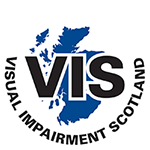Enabling notification of visual impairment in Scotland
Research on childhood visual impairment has resulted in a national registration system in both Scotland and Australia.

Research hubs
Advanced Quantitative Research in Education
Research expert
Research centre
What was the problem?
In Scotland, 74% of new blind and partial-sight registrations in children with Local Authorities occur after the age of 5, even though most cases of childhood visual impairment are evident by the age of 2. This affects both the developmental progress and the ability to receive necessary support. It is not known if children fail to receive necessary services due to the delay between the onset of visual impairment and notification to the official registration system.
Childhood visual impairment impacts upon a child’s development, education, employment and emotional and social prospects, and similarly effects the immediate family. Visual impairment also creates financial implications for society, impacting upon the provision of educational, social and health services.
In order to offer inclusive, efficient and effective services and holistically support children and their families, Scotland needs an accurate number, location and profile of visually impaired children.
What did we do?

John in collaboration with practitioners developed the UK’s first notification system of children with visual impairment (Ravencroft et al, 2008). The Visual Impairment Scotland (VIS) Project addressed three key areas:
- Establishing an accurate record of visually impaired children in Scotland and their needs
- Delivering a comprehensive information and sign-posting service to parents and local authorities of visually impaired children as well as professionals who support them
- Lessening the feeling of isolation experienced by many visually impaired children and their families.
Visual Impairment Scotland (VIS) Project
The notification of visually impaired children relies on support from consultant paediatric ophthalmologists, social workers responsible for visually impaired children, paediatricians, educators, and parents and children themselves.
Between March 2001 – 2014, VIS captured information about more than 1,300 children, including the child’s vision, support at school, and other information necessary to provide support. The target population of “children with significant visual impairment” included:
Any child under the age of 16 years (or still in statutory education) who has
- A best corrected binocular visual acuity of equal to or worse than 6/18 (or equivalent) or,
- Any form of visual field loss or,
- An eye movement disorder which affects visual function or,
Any form of “higher” cognitive brain dysfunction that impairs vision.
What happened next?
So successful was the VIS project that it transformed into one of Scotland’s managed clinical networks called Visual Impairment Network for Children and Young People (VINCYP), which is fully financed by NHS Scotland (April 2014).
As with VIS, VINCYP aims to improve the care for children and young people with visual impairments. The network uses the VIS model and involves professionals working in health, education and social work, parents or carers of children and young people with visual impairments, and voluntary sector organisations.
Informed by VIS research, VINCYP is in a leading position to accurately profile and identify the number of visually impaired children and, in February 2015, a pilot “clinical audit system” began, to continue data collection across Scotland.
Analysis of the data such as over 70% of children with visual impairment have additional disabilities and that Cerebral Visual Impairment is the most common form of childhood visual impairment in Scotland, has informed the Scottish Government and Scottish Health Boards.
John was invited to give evidence to the Scottish Parliament’s Education and Culture Committee on the Attainment of School Pupils with a Sensory Impairment (May 2015). This led the Committee to cite John’s findings in their report and recommend in a further letter “that the Minister considers the options available to incentivise teachers to become ToD [teachers of the deaf] and QTVI [qualified teachers of the visually impaired], building on the actions already implemented by Moray House School of Education and Sport.”
In addition, parents received greater understanding of their child’s visual impairment as families are given a bespoke personalised information sheet explaining the child’s diagnosis.
As a result of this research, John was invited by the Renwick Centre, University of Newcastle, New South Wales Australia, on a secondment basis to set up the Australian Childhood Vison Impairment Register (ACVIR).
My son had a Craniopharyngioma, diagnosed at the age of 2. For a few years the fact that he had lost 75% of his vision seemed the least of our troubles. It wasn’t until I became involved with VI Scotland that I discovered proper support, learnt a great deal about visual impairment, made valuable contacts and met parents in a similar situation. (Having a very sick, visually impaired child in rural Scotland is a pretty lonely situation to find oneself in.) It ultimately resulted in him going to the Royal Bind School at the age of 11. Without doubt, this was life changing for him and we really do owe this outcome to V I Scotland.
Related study programme
Inclusive Education (MSc) with specific pathways for Postgraduate Diploma (visual impaired learners)

